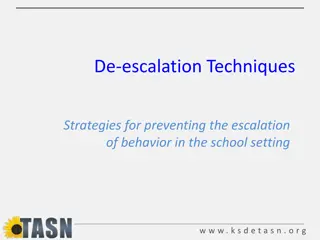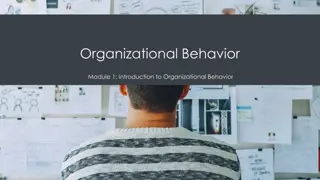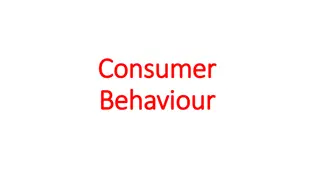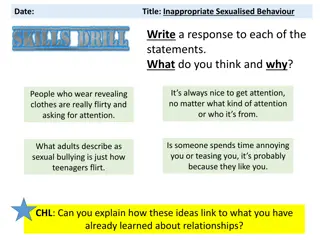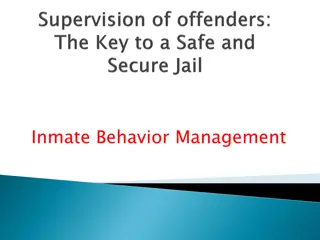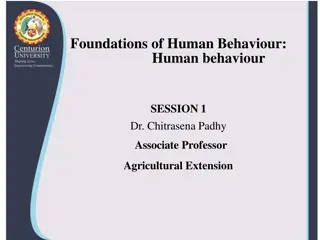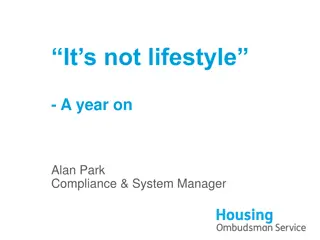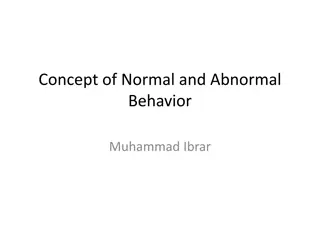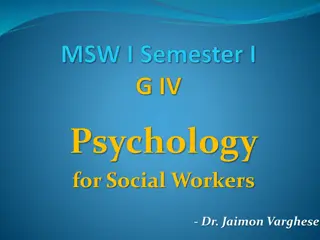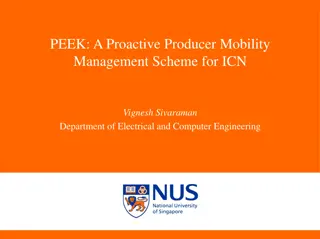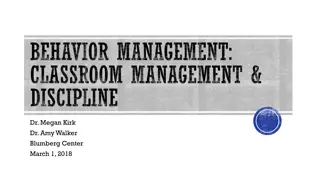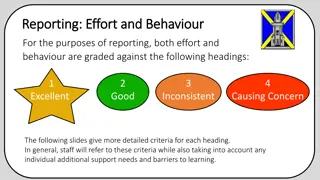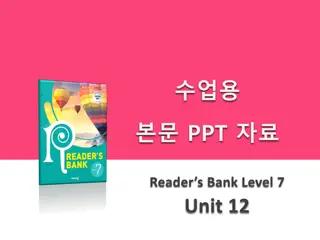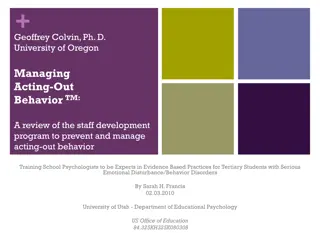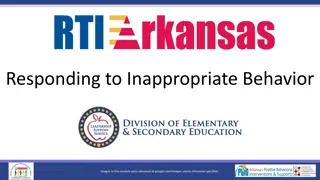Proactive Strategies for Behavior Management
In this resource, you will review preventative approaches and learn specific proactive strategies to address challenging behaviors. Explore antecedent interventions, class-wide strategies, and individualized approaches to create proactive plans. Understand the importance of environmental modifications and personalized interventions to support positive behavior outcomes.
Download Presentation

Please find below an Image/Link to download the presentation.
The content on the website is provided AS IS for your information and personal use only. It may not be sold, licensed, or shared on other websites without obtaining consent from the author.If you encounter any issues during the download, it is possible that the publisher has removed the file from their server.
You are allowed to download the files provided on this website for personal or commercial use, subject to the condition that they are used lawfully. All files are the property of their respective owners.
The content on the website is provided AS IS for your information and personal use only. It may not be sold, licensed, or shared on other websites without obtaining consent from the author.
E N D
Presentation Transcript
Objectives 1.) Review background information related to preventative approaches to behavior 2.) Learn three specific proactive strategies 3.) Practice strategies 4.) Develop proactive plans incorporating discussed strategies to target common challenging behavior(s).
Preventing with Antecedent Interventions - Interventions that alter environmental events to help decrease challenging behavior and increase desirable behavior Implementing these interventions can quickly reduce problem behavior Allows for observing the environment and making changes to help decrease challenging behavior Enhances the instructional environment Should be combined with skill instruction and strategies for responding to problem behavior Can be implemented as class-wide or individualized - - - - -
Class-Wide Interventions - Seek to establish a classroom that sets students up for success - Positive, orderly, predictable and motivating Examples: - Clear Rules and Expectations - Increasing Predictability - Praise - Task Difficulty - Opportunities to Respond - Classroom Seating Arrangements - Effective Instructions and Commands - Activity Sequence - Pace of Instruction - Choice and Preferred Activities -
Individualized Interventions - If class-wide interventions have not been successful for a student, more individualized antecedent interventions may need to be implemented Use an Functional Behavior Assessment to guide the decisions of the environmental factors that impact behavior Examples: - Work Difficulty - Incorporating Student Interests - Choice - Mode of Task Completion - Scheduled Attention - Scheduling and Predictability - -
Mode of Task Completion - Determine if the mode of the task completion is related to the challenging behavior. Provide alternative modes to complete assignments or activities Example: - A student with fine motor deficits may be given opportunities to dictate answers to others or use computer generated voice to text options - -
Scheduled Attention - If a student demonstrates challenging behavior to gain attention, this is an appropriate antecedent intervention. Periodically schedule times that the teacher and/or para will deliver attention to the student. A staff member can check in with the student. Proximity between staff and student is important. Peer tutoring and peer attention can also be scheduled throughout a student s day. Appropriate attention seeking skills should also be taught. - - - - -
Schedule and Predictability - A student may demonstrate challenging behavior to keep an activity going or to escape from an activity. Clear schedule and increased predictability help a student to understand the schedule and the amount of time designated for each activity. Provide warnings and priming statements about the amount of time left and the upcoming transition. - -
Situation 1: Everyday Mrs. Baker s class goes through the lunch line, the students jump in and out of line. Once the students are through the line and get their food trays, they run to the table. The students are disruptive while eating and do not follow the routine of raising their hand to ask to dump their tray. What are some class-wide antecedent interventions that could be implemented for this class? What information led you to choose those intervention(s)?
Situation 2: Kasey is in a classroom of 23 other students. Kasey s teacher stands up front to teach the lesson about how to write a paragraph . After the lesson is delivered, the teacher gives an assignment to write 2-3 paragraphs independently. The teacher goes back and sits at her desk while the students work. Kasey puts his head down and refuses to complete written work. Kasey receives occupational therapy 2x a week for fine motor deficits. What are some individual student antecedent interventions that could be implemented with Kasey? What information led you to decide on those intervention(s)?
Your Own Situation - Think of the classroom you work in. Write down a typical situation that challenging behavior occurs. Think of the different antecedent interventions, are you implementing any of these interventions with your students? - If so, which ones? - If not, which ones could you implement? - Are these interventions implemented with fidelity? -
ABCs Antecedents: Event before behavior that signals to do or not do certain behaviors Behavior: Anything the student does or says Consequence: Event after behavior that either reinforces the behavior, provides nothing, or punishes the behavior **We teach students to understand when to do a specific behavior and when not to**
Common Scenario Adult: It is time for math, take out your math packet. Student: No! Why should I? Adult: Because it is time for math. What is missing from the adult s response? MOTIVATION
Motivation We do what we do because of what happens to us.
Keys to Using Student Motivation Effectively Assess: What does the student get for using the target skill? Can the student get the same outcome if they do not use the skill? Examples: HN attention Seated and ring bell versus challenging behavior
Keys to Using Student Motivation Effectively Evaluate: Does the student use the skill on their own - without external motivation (e.g., incentives)? Does the student use the skill with external motivation? Example: Following directions What s in it for the student?
What is priming? Antecedent strategy that allows the student to preview consequences Assesses student motivation naturally Increases predictability for the student Increases likelihood that student will use desired skill(s) Is not a reactive strategy Eliminates potential for incorporating student motivation after challenging behavior which can lead to: Power struggles Possibility of reinforcing undesired behavior(s) Escalation
Priming Prerequisites Know the student s reinforcement system and their motivation What do they earn? How do they earn it? What do they want - what motivates them? Be sure the reinforcement system is structured and used consistently Contingencies are established for display of desired and undesired behavior Not subjective
Developing priming statements Things to consider: Student motivation Identify/label the specific skill you are priming Use consistent language Rationales for using skill and/or not using the skill Teach frequently and incorporate when providing feedback Incorporate natural consequences (desired and undesired) to begin fading external supports E.g., waste time versus earn preferred item/activity
Example Priming Statements When you earn points for following directions during math, you get 10 minutes of free time. When you share, friends want to play with you. Remember when someone says no you can ask to do something else.
Activity Identify a skill you are currently teaching one of your students Develop 3 priming statements Identify 1-2 situation scenarios when you would present the priming statements
ABCs Antecedents: Event before behavior that signals to do or not do certain behaviors Behavior: Anything the student does or says Consequence: Event after behavior that either reinforces the behavior, provides nothing, or punishes the behavior **We teach students to understand when to do a specific behavior and when not to**
Feedback Students need to access positive feedback/reinforcement for accurate responses. Inaccurate responses should be immediately corrected using an effective prompt.
Positive Feedback Students need feedback to understand what was correct and what was incorrect Provide immediately Be specific: Correct the answer to number 1 is b! Be genuine Give individual feedback: Jamie, you are right! 4 x 2 = 8. Give group feedback: Right! 4 x 2 = 8.
Example: A: See familiar person B: Say Hi Rachel! C: Hazel waves back but does not say her name is not Rachel What is likely to happen next time? Why? The error was never corrected. Now this person is practicing errors
Corrective Feedback Use when students inaccurately respond Provide immediately, we don t want to practice errors! Restate the question and the correct answer The capital of Minnesota is St. Paul Have the students practice the correct response with you. Alright all together, the capital of Minnesota is St. Paul
Corrective Feedback Cont. Move on to something else for a couple responses What states are next to South Dakota? Come back and check for accuracy. Class what is the capital of Minnesota?
Discussion Feedback provides information about skill performance Is this enough to promote and maintain skill use? Why or why not?
Promote versus Maintain Immediate and dense reinforcement schedules during teaching increase likelihood of replacement skill use = Promote Reinforcement is required for use of skill to maintain over time Lack of reinforcement or fading reinforcement too quickly: Decrease likelihood of replacement skill use Increase in challenging behavior
References Kern, L., & Clemens, N. H. (2007). Antecedent strategies to promote appropriate classroom behavior. Psychology in the Schools, 44(1), 65-75.


